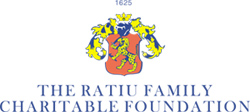UCL School of Slavonic and East European Studies, University College London, 7th Annual International Postgraduate Conference
Inclusion Exclusion
Friday 17 February 4:30 – 6:00: Panel G2: Dividing Religion
Katja Richters (UCL - SSEES): ‘Russia’s religious legislation: who is excluded, who is included?’
When discussing inclusion and exclusion, contemporary scholars often presuppose the existence of a majority and a minority. They draw a picture of a numerically strong centre around which several smaller groups gravitate without being able to integrate into it. In this context, the inclusion in the mainstream is often depicted as desirable and associated with certain rights and privileges whereas the exclusion from it is connoted with struggle and hardship, if not worse.
The same holds true for the discussion which Russia’s adoption of a new law on religion in 1997 called forth amongst Western academics and human rights watchers. The law on "Freedom of Conscience and Religious Associations" from September 1997 acknowledges the Russian Orthodox Church’s (ROC) special contribution to the country’s culture and statehood and makes a clear distinction between traditional and non-traditional religious organisations. The ROC was thus established as the ultimate traditional church, whereas Western Christians and New Religious Movements (NRMs) were portrayed as new to the polity and only Islam, Buddhism and Judaism were tolerated alongside the ROC. Liberal-minded observers therefore feared that this piece of legislation would be used to discriminate against all of Russia’s religious communities that do not belong to the ROC.
My paper seeks to a) explain why this law was adopted and b) to challenge the idea that inclusion is always beneficial to those who have it. By analysing a number of primary and secondary sources, such as newspaper and journal articles as well as official ROC and state publications, I will clarify that the law was conceived the way it was due to a particular vision of the post-communist Russian national identity. This is an identity based on Orthodoxy and in which faith and nationality are almost used as synonyms. It is further a concept of the Russian ‘self’ which excludes ‘Westerners’ in both the political and religious sense, but is open to the inclusion of Muslims and converts from other faiths.
The main proponent of this vision is the ROC itself and the fact that its ideas were converted into a law demonstrates that the Church is becoming an integral part of the Russian state. Given that the ROC’s vision of the contemporary Russian national identity accepts converts, the adoption of this law and its potentially repressive measures, especially for ‘Western’ religious organisations, can be interpreted as the Church’s attempt at forcibly converting ‘Western’ Christians to Orthodoxy. So, it can be argued that this piece of legislation demonstrates that the ROC is using the state for its own missionary purposes. Although this might seem desirable at the moment, I will conclude that this is unlikely to be a fruitful long-term strategy as Russia’s minority religious organisations have found a way of avoiding the law’s repressive potential. In my conclusion, I will also sketch the ways in which too close an identification with the state might be detrimental for the ROC and Russian society in general.




